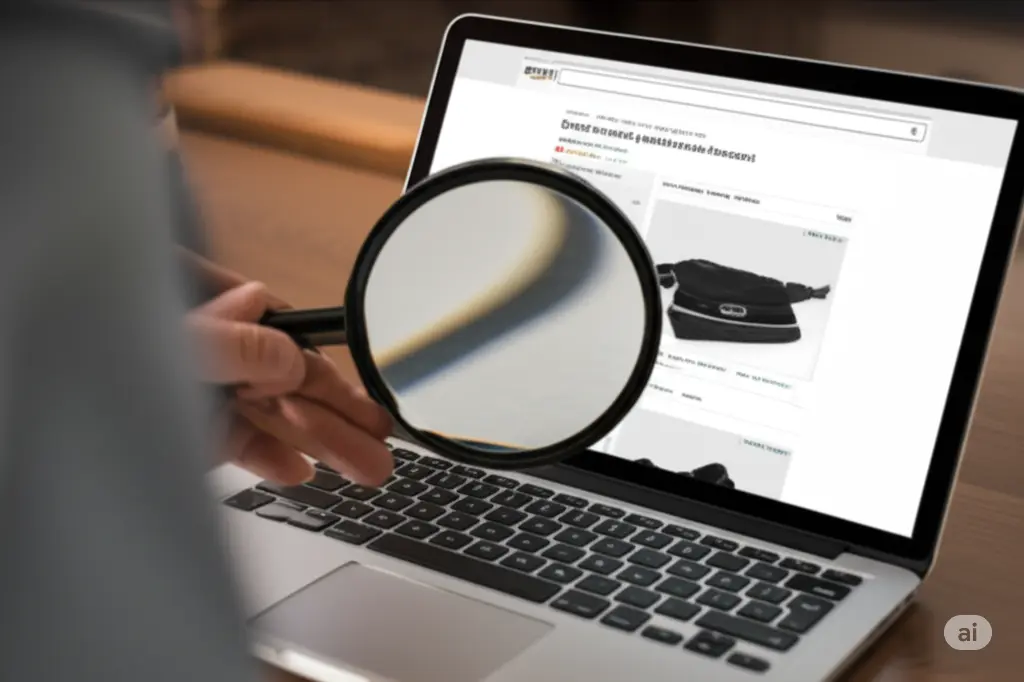You’ve probably seen it, your product’s name on an Amazon listing you know you didn’t authorize. Same title, same images, maybe even the same bullet points. But the seller? Completely unfamiliar. And the reviews are starting to complain about “poor quality” or “different packaging.”
That’s not just annoying—it’s dangerous. Counterfeits chip away at your brand’s reputation, siphon off sales, and, if left unchecked, can push loyal customers straight into a competitor’s arms. According to a 2024 industry report, the counterfeit trade accounts for over $500 billion annually, and e-commerce platforms are a prime hunting ground.
This guide gives you the tools to fight back. We’ll break down:
How to identify tell-tale signs of counterfeit listings before they spread
What data signals Amazon itself pays attention to
How to report and escalate effectively so your actions actually stick
Because protecting your brand online isn’t just about spotting fakes—it’s about building systems so they never get a foothold in the first place.
What are counterfeit products on Amazon?
Counterfeit products on Amazon are fake or imitation goods that are sold under the name of a genuine brand without the brand’s authorization. They’re designed to look like the real product—often copying the logo, packaging, and even marketing materials—but are typically made with lower-quality materials and don’t meet the original brand’s safety, performance, or quality standards.
On Amazon, counterfeit products can show up in two main ways:
- Direct listings by counterfeiters pretending to be the brand.
- Piggybacking on genuine listings by offering the counterfeit as the “same” product but at a lower price.
They hurt brands by damaging reputation, causing lost sales, and leading to negative reviews when buyers unknowingly receive a fake. They also put consumers at risk, especially when it comes to items like electronics, supplements, or cosmetics, where quality directly affects safety.
How Counterfeit Products Affect Brands and Consumers?
Counterfeit products on Amazon don’t just hurt the person who unknowingly buys them—they create a ripple effect that damages both brands and the wider marketplace. For brands, every fake sale is lost revenue, but the bigger blow is reputational. When a customer buys what they think is your product and it breaks, smells bad, or even causes harm, they often blame the brand name on the box, not the shady seller behind it. Over time, this erodes trust, making even loyal customers hesitant to buy online.
For consumers, the impact can range from mild disappointment to serious danger. A poorly made counterfeit phone charger can be a fire hazard; fake skincare products can trigger allergic reactions; counterfeit supplements can pose real health risks. Even when safety isn’t an issue, buyers end up with subpar items that don’t deliver on the promises they expected—leading to frustration, wasted money, and mistrust toward the platform.
How to Identify Counterfeit Products on Amazon?
- Unusually low prices – If the price is far below the average market value, it’s a red flag.
- Suspicious seller profiles – New or unknown sellers with minimal ratings or vague business names can be a sign of counterfeit activity.
- Poor product images – Blurry, low-resolution photos or images that look copied from another site may indicate the product isn’t genuine.
- Inconsistent branding or packaging – Misspelled words, wrong logos, or packaging that doesn’t match the official product can signal a fake.
- Negative reviews mentioning authenticity issues – Look for feedback from other buyers calling out poor quality, defects, or obvious fakes.
- Missing manufacturer warranty – Genuine products usually come with an official warranty; counterfeits do not.
- “Just launched” labels – Sellers who recently started and are offering popular products at bargain prices should be approached with caution.
Amazon’s Anti-Counterfeiting Measures
Amazon has introduced several programs to protect brands and customers from counterfeit products, aiming to make it harder for bad actors to operate and easier for brands to defend their intellectual property.
Amazon Brand Registry
The Amazon Brand Registry is designed for brands that own a registered trademark. Once enrolled, brands get access to powerful tools to control their listings, remove counterfeit or inaccurate content, and prevent unauthorized sellers from altering product details. It also unlocks advanced search features to find and report suspected counterfeit listings faster.
Project Zero
Project Zero gives brands the ability to directly remove counterfeit listings without having to go through Amazon’s traditional reporting channels. It combines Amazon’s machine learning with the brand’s own data to proactively detect and block fake listings before they appear to shoppers. Brands must be enrolled in the Brand Registry and invited to join Project Zero.
Transparency Program
Amazon’s Transparency Program uses unique, scannable codes on every product unit to verify authenticity. Brands apply these codes to their products, and Amazon checks them before fulfillment. Customers can also scan the code themselves using the Amazon app to confirm they’re buying a genuine product. This system prevents counterfeiters from successfully listing or shipping fakes through Amazon’s platform.
How Brands Can Protect Their Products on Amazon
Fighting counterfeits on Amazon requires more than just hoping the platform’s automated systems catch bad actors—it takes a proactive, multi-layered approach.
First, brands should register their trademarks and enroll in Amazon’s Brand Registry to gain access to listing control and reporting tools. Pair that with the Transparency Program to ensure every product sold carries a unique, verifiable code. Monitoring reviews and seller activity regularly can also help catch counterfeit listings early.
But the reality is, counterfeiters move fast. That’s where AxleIT comes in.
Our e-commerce intelligence and brand protection platform continuously scans Amazon for suspicious activity, identifies potential counterfeit listings, and flags unauthorized sellers before they harm your sales or reputation.
AxleIT’s technology goes beyond detection—it gives you actionable data so you can take swift, targeted action to protect your brand, preserve customer trust, and keep revenue in your own hands.
In short, combine Amazon’s in-house tools with AxleIT’s specialized protection, and you’ll have a defense strategy that counterfeiters can’t outrun.
